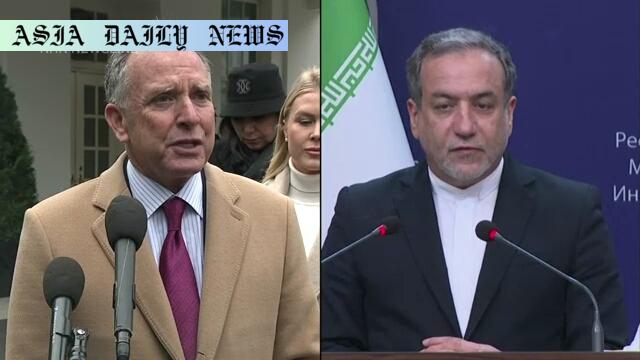Iran-US Nuclear Talks: Senior officials from both nations signal optimism as the third high-level bilateral discussion concludes in Oman.
- Key Point 1: US and Iranian officials express optimism after the third round of high-level bilateral nuclear talks held in Oman.
- Key Point 2: Talks moved from broad generalities to specific agreement details, marking a shift towards more detailed discussions.
- Key Point 3: Both sides acknowledge significant differences remain but agree to continue discussions next week in Europe.

Progress in Third Round of Iran-US Nuclear Talks
The United States and Iran, two key players in global diplomacy, have expressed cautious optimism following the third round of nuclear talks held in Oman. Led by US Special Envoy to the Middle East Steve Witkoff and Iranian Foreign Minister Abbas Araghchi, these discussions lasted over four hours and marked a shift toward more detailed negotiation.
The dialogue centered around the US objective of limiting Iran’s nuclear program and Iran’s insistence on lifting economic sanctions. For the first time, working-level representatives contributed to specific content discussions. Both nations have emphasized that their stances have not fully converged yet but acknowledged the mutual seriousness of the negotiations.
Details of the Agreements and Challenges
According to Witkoff, the talks were “positive and productive,” albeit leaving substantial work to finalize an agreement. The US government is eager to prevent nuclear proliferation and establish limits on Iran’s nuclear enrichment activities. Conversely, Iran continues to assert its right to a peaceful nuclear program while seeking the removal of crippling economic sanctions imposed by the US.
Araghchi commented on the ongoing existence of differences, citing both major and minor disagreements. However, he noted progress in moving from general topics to specific and technical discussions. This transition, observers believe, could signify a turning point for achieving tangible results in future negotiations, though challenges remain significant.
Coming Negotiations and Potential Impacts
Both sides have committed to subsequent negotiations, with the next round scheduled for a week later in Europe. Diplomats expect these discussions to focus on bridging remaining gaps, including the specific terms for lifting sanctions and limits on nuclear activities. External observers have cautioned that while the positive outlook is promising, reconciling the historical mistrust and divergent interests of the two nations will require substantial effort.
A successful agreement could have far-reaching implications, including stabilizing the Middle East, enhancing global security, and contributing to a better economic relationship between Iran and the global community. However, failure to reach consensus might exacerbate tensions and derail months of diplomatic engagement.



Commentary
The Complexity of US-Iran Diplomatic Relations
The ongoing nuclear discussions between the United States and Iran are emblematic of the delicate and often contentious nature of international diplomacy. Both nations come with a history fraught with mistrust, each driven by a determination to protect their interests and uphold their principles. It is within this challenging context that encouraging signs of progress have emerged, showcasing the power of dialogue amidst adversity.
Challenges in Bridging the Gaps
Despite some optimistic statements, the gaps between both nations remain significant on both technical and ideological fronts. The United States has maintained a firm stance on non-proliferation, seeking assurances against the potential weaponization of Iran’s nuclear capabilities. At the same time, Iran’s demand for sanction relief stems not only from national interest but also from a sense of rightful sovereignty and economic necessity.
Why This Matters Beyond the Immediate
Any agreement reached will resonate far beyond the confines of these negotiation rooms. Stabilizing Iran’s nuclear ambitions could de-escalate tensions in an already volatile Middle East. On the economic front, lifted sanctions could reintegrate Iran into global markets, creating opportunities for trade and development. However, a failure to compromise could result in heightened tensions and possibly a return to aggressive posturing from both parties.
The cautious optimism expressed by both US and Iranian officials serves as a reminder of the potential for diplomacy to bridge even the most challenging divides. The road ahead remains fraught with obstacles, but the commitment to sustained discussions provides hope for a more stable and secure global landscape.